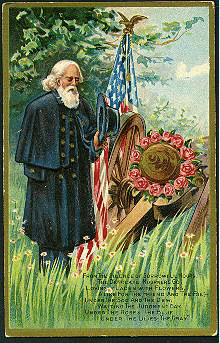In preperation for the November 21st lecture by Peter Rose “St. Nicholas: The Saint who became Santa” we will offer a series of blogs which look at the history behind St. Nicholas and the culinary traditions of the Dutch in New York.
For reservations for Ms. Rose’s program (sponsored by the New York State Council for the Humanities) call us at 518-374-0263. The program is free and open to the public but reservations are highly recommended.

Early nineteenth century mold in the SCHS collections
No matter what the holiday or special occasion, food factored heavily into Dutch celebrations. From the beginning of December through Twelfth Night, special breads, cookjes, and deserts came out of ovens throughout New Netherland. Wafers made in special irons, marzipan molded into shapes or diamond duivekater, graced both tables, and children’s shoes during the St. Nicholas celebrations. On Twelfth Night, the sixth day of January, a special cake helped settlers celebrate the end of the holiday season. A bean, baked inside the cake, when discovered decided who would “rule” for the evening. Into the nineteenth century, Dutch-American families held onto their recipes. The most treasured of these traditions were the New Year cookjes or speculaas. Traditionally given to New Years visitors, the hand-made wooden molds used to create the cookjes were passed down from generation to generation, later in the nineteenth century, mass-produced iron molds became popular.
Easily the largest and most impressive mold in the collection of the Schenectady County Historical Society, this cake mold dates to the early nineteenth century. It is a fiat board which combines both a large cake mold on one side and on the other a variety of cookie molds on the other. Its pointed oval designs, floral motifs, symmetry, and high quality of craftsmanship help date it but as with many hand made wooden items, an exact date is next to impossible to establish.
Often professional bakers were trained as part of their apprenticeship to carve a diverse variety of molds for their own professional needs. Ranging from floral motifs and fanciful fruit to Punch and Judy, Native Americans, and soldiers, these molds were very diverse and unique. When mass-produced iron molds appeared in the nineteenth century, popular styles were copied for the public. New Year greetings, animals, fruit, and flowers were some of the most common symbols but odd images also appeared. One mold in the collections of the Schenectady County Historical Society shows a child on a chamber pot. An interesting choice for a cookie mold especially because smaller iron molds like this were intended for the home and, mass-produced for a wide audience.
By the end of the nineteenth century, the art of carved wooden cookie molds was revived by a number of Schenectadians eager to reclaim a part of their past. Although these molds are often not of the same artistic caliber of their fore fathers, the images chosen and their existence at all is a testament to the renewed interest in history seen during this period. A mold in the collection depicts Union College. Always a strong aspect of Schenectady, Union College, established in 1795, was a badge of pride for the city. As it reached its centennial, it may have inspired the creation of this mold.











